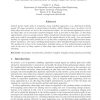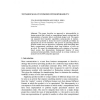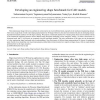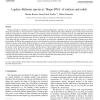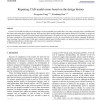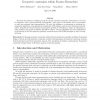CAD
2006
Springer
14 years 8 months ago
2006
Springer
Limited by the regular grids in computing, many modelling approaches (e.g., field-based methods) sample 3D shape insensitive to sharp features therefore exhibit aliasing errors, b...
CAD
2006
Springer
14 years 8 months ago
2006
Springer
This paper describes an approach to interoperability in design projects that is based on computational agents customizing the representation of product data to individual design to...
CAD
2006
Springer
14 years 8 months ago
2006
Springer
Three-dimensional shape retrieval is a problem of current interest in several different fields, especially in the mechanical engineering domain. There exists a large body of work ...
CAD
2006
Springer
14 years 8 months ago
2006
Springer
We introduce an affine extension of the Euler tensor which encompasses all of the inertia properties of interest in a convenient linear format, and we show how it transforms under...
CAD
2006
Springer
14 years 8 months ago
2006
Springer
CAD
2006
Springer
14 years 8 months ago
2006
Springer
This paper introduces a method to extract `Shape-DNA', a numerical fingerprint or signature, of any 2d or 3d manifold (surface or solid) by taking the eigenvalues (i.e. the s...
CAD
2006
Springer
14 years 8 months ago
2006
Springer
For users of CAD data, few things are as frustrating as receiving unusable, poor quality data. Users often waste time fixing or rebuilding such data from scratch on the basis of p...
CAD
2006
Springer
14 years 8 months ago
2006
Springer
Modeling, design and fabrication of tissue scaffolds with intricate architecture, porosity and pore size for desired tissue properties presents a challenge in tissue engineering. ...
CAD
2006
Springer
14 years 8 months ago
2006
Springer
We study the problem of enabling general 2D and 3D variational constraint representation to be used in conjunction with a feature hierarchy representation, where some of the featu...
CAD
2006
Springer
14 years 8 months ago
2006
Springer
A novel and efficient quasi-Monte Carlo method for computing the area of a point-sampled surface with associated surface normal for each point is presented. Our method operates di...
